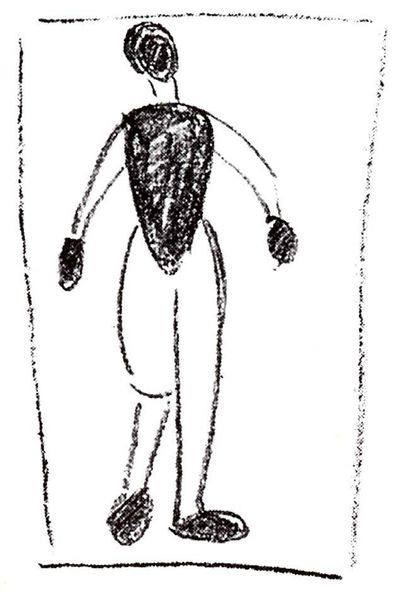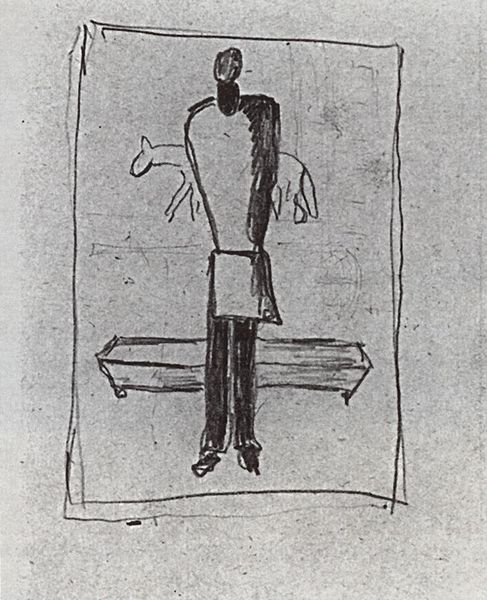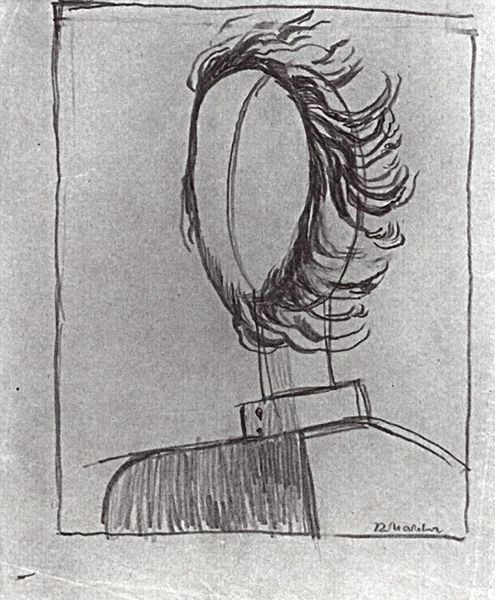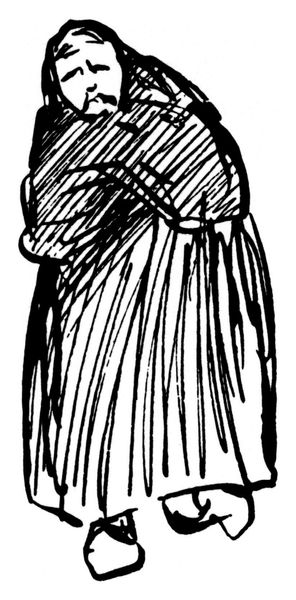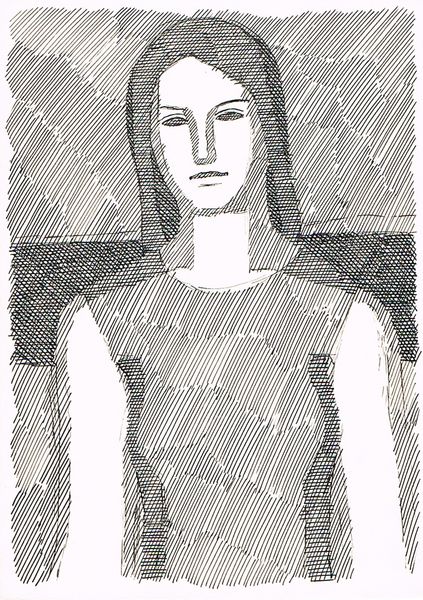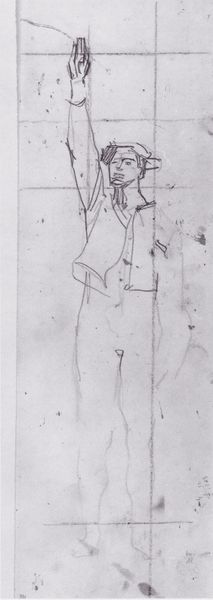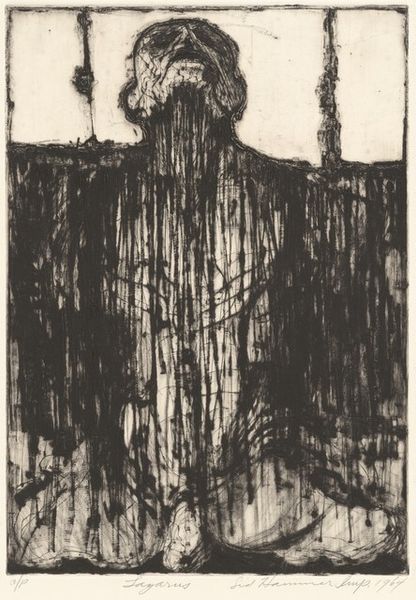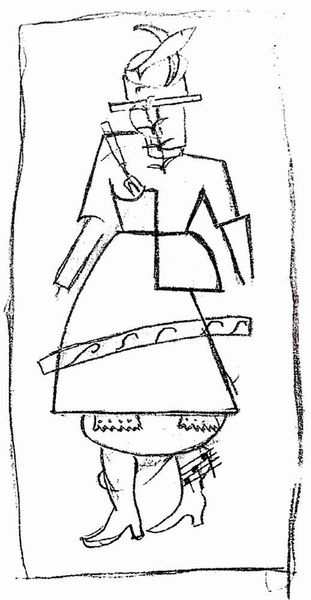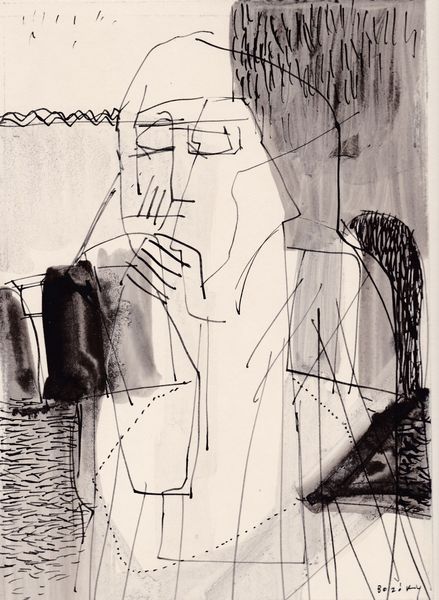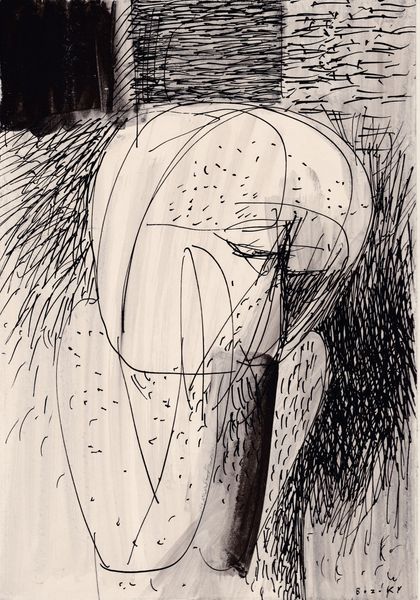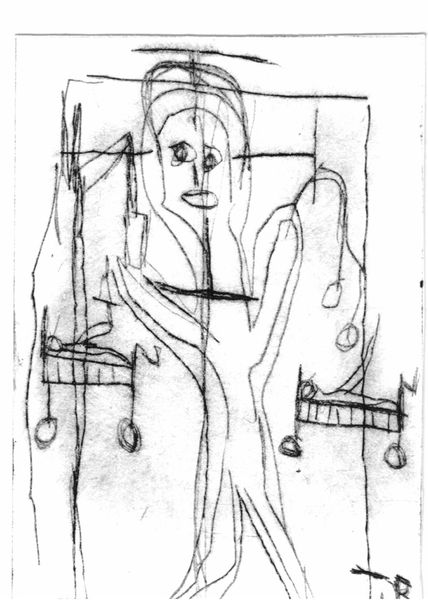
drawing, ink
#
drawing
#
line-art
#
figuration
#
line art
#
ink line art
#
ink
#
abstraction
Copyright: Public domain
Curator: Here we have "Mystic," an ink drawing by Kazimir Malevich. Editor: Whoa. Immediately, I'm struck by its... awkward beauty? There's a tension between the rough lines and the sort of serene, almost haunting, figure it depicts. Is that a person? Or something...else? Curator: Malevich was deeply interested in spirituality, exploring how abstract forms could evoke transcendental experiences. This drawing is one manifestation of those inquiries. Look at how he simplifies the human form into almost geometric shapes, yet retains a sense of weight and presence. Editor: That dark, textured area forming one side of its...torso? And the blank, crispness on the other, really highlights this strange dichotomy, this pulling between weight and lightness. And is that a cross inside its head? Heavy stuff. Curator: Exactly. The cross acts as a focal point, referencing not just religious symbolism, but also Malevich's exploration of Suprematism, where geometric forms become conduits to higher planes of consciousness and existence beyond objective representation. It’s a very clear break from traditional academic representation. Editor: Suprematism… I guess I can see it. All these austere shapes hovering on the very edge of dissolving! A stark portrait! Though dissolving suggests loss of faith...which, paradoxically, the stark central cross denies... Curator: A lot of early 20th-century art, even the most outwardly severe works like this, sought to rebuild faith on new foundations after societal and technological upheavals. There’s definitely a lot of turmoil and faith intertwined here. Editor: So it's art reflecting societal angst and spiritual seeking? Like everyone trying to make sense of the world changing underneath their feet? No wonder there's a mystical tension! A strange figure frozen on paper, caught between despair and belief. That’s very affecting. Curator: It's really amazing how such simple lines can communicate so much. It embodies the turbulent era when it was created, the anxieties of that time are very tangible, I find. Editor: I have to agree with you. I can keep pondering at length about how Malevich’s abstract vision communicates more to me now than conventional portraits possibly could.
Comments
No comments
Be the first to comment and join the conversation on the ultimate creative platform.
